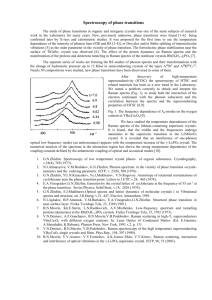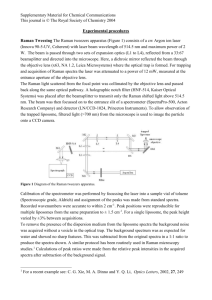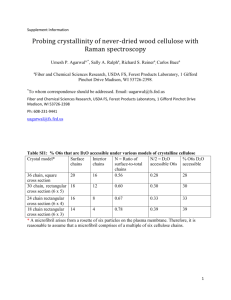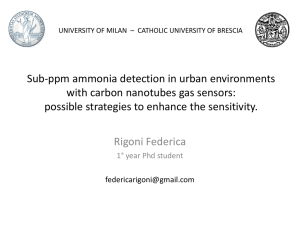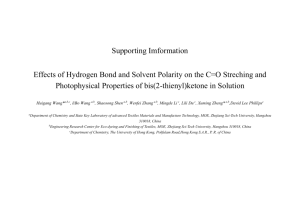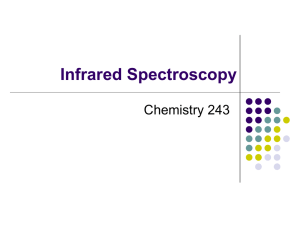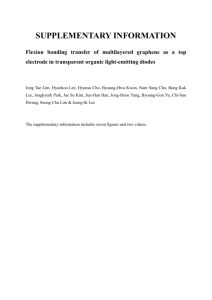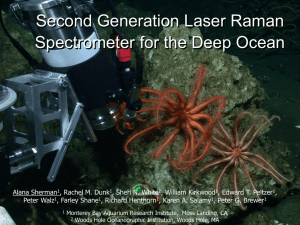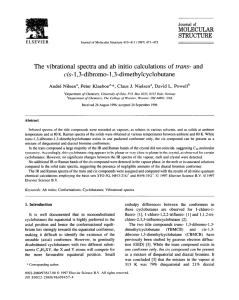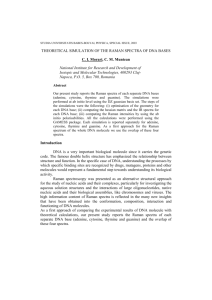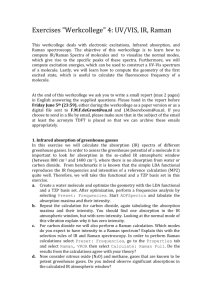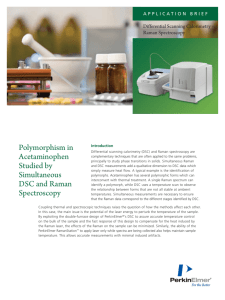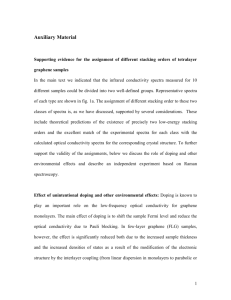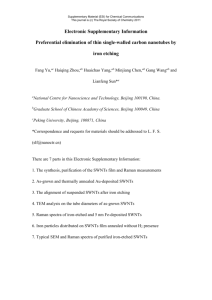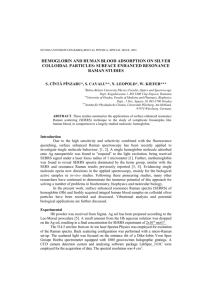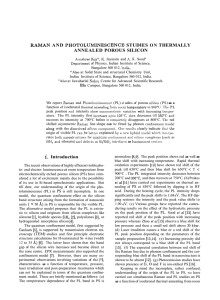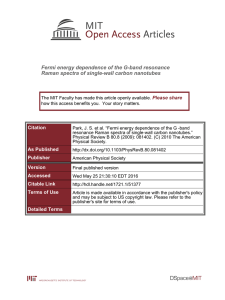Temperature dependence of Raman scattering in single
advertisement
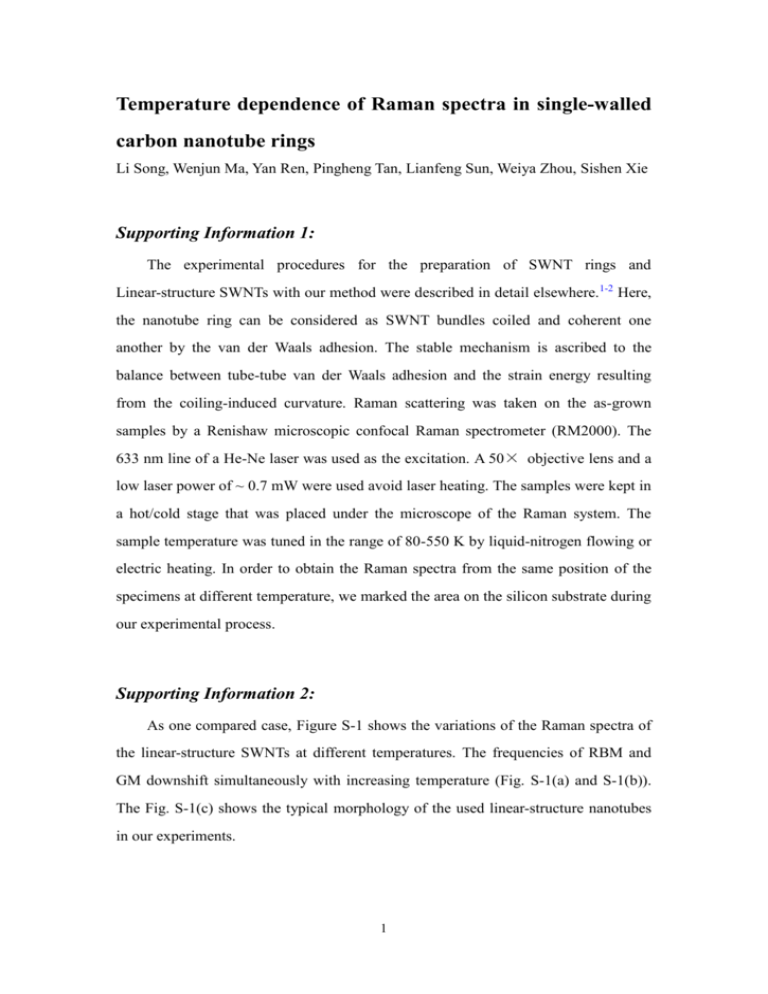
Temperature dependence of Raman spectra in single-walled carbon nanotube rings Li Song, Wenjun Ma, Yan Ren, Pingheng Tan, Lianfeng Sun, Weiya Zhou, Sishen Xie Supporting Information 1: The experimental procedures for the preparation of SWNT rings and Linear-structure SWNTs with our method were described in detail elsewhere.1-2 Here, the nanotube ring can be considered as SWNT bundles coiled and coherent one another by the van der Waals adhesion. The stable mechanism is ascribed to the balance between tube-tube van der Waals adhesion and the strain energy resulting from the coiling-induced curvature. Raman scattering was taken on the as-grown samples by a Renishaw microscopic confocal Raman spectrometer (RM2000). The 633 nm line of a He-Ne laser was used as the excitation. A 50× objective lens and a low laser power of ~ 0.7 mW were used avoid laser heating. The samples were kept in a hot/cold stage that was placed under the microscope of the Raman system. The sample temperature was tuned in the range of 80-550 K by liquid-nitrogen flowing or electric heating. In order to obtain the Raman spectra from the same position of the specimens at different temperature, we marked the area on the silicon substrate during our experimental process. Supporting Information 2: As one compared case, Figure S-1 shows the variations of the Raman spectra of the linear-structure SWNTs at different temperatures. The frequencies of RBM and GM downshift simultaneously with increasing temperature (Fig. S-1(a) and S-1(b)). The Fig. S-1(c) shows the typical morphology of the used linear-structure nanotubes in our experiments. 1 FIG. S-1. Raman spectra of RBM (a) and GM (b) of the linear-structure SWNTs at temperature of 100, 300, and 500 K, respectively. (c) A typical SEM image of the linear SWNTs. Supporting Information 3: As one convincible data, we also analyze the variations of the Raman spectra of the silicon, which were recorded from the silicon substrate when measured the Raman spectra in the SWNT ring specimens and the linear SWNTs specimens, respectively. The temperature-dependent frequencies of the longitudinal optical phonon mode (LO mode) for the silicon are displayed in Fig. S-2. It is found that the Peaks of the LO mode are well consistent with the previous reported data,3-4 which means the data in our experiments are repetitive and convincing. 2 FIG. S-2. Raman spectra recorded from the silicon substrate/SWNT rings (a) and the silicon substrate/linear SWNTs at temperature of 100, 200, 300, 400, and 500 K, respectively. (c) Showing the corresponding temperature dependence of their frequencies of si peak, compare with the data adopted from the references. 1 L. Song, L. J. Ci, L. Lv, Z. P. Zhou, X. Q. Yan, D. F. Liu, H. J. Yuan, Y. Gao, J. X. Wang, L. F. Liu, X. W. Zhao, Z. X. Zhang, X. Y. Dou, W. Y. Zhou, G. Wang, C. Y. Wang, and S. S. Xie, Adv. Mater. 16, 1529 (2004). 2 L. Song, L. J. Ci, L. F. Sun, C. H. Jin, L. F. Liu, W. J. Ma, D. F. Liu, X. W. Zhao, S. D. Luo, Z. X. Zhang, Y. J. Xiang, J. J. Zhou, W. Y. Zhou, Y. Ding, Z. L. Wang, and S. S. Xie, Adv. Mater. 18, 1817 (2006). 3 R. Tsu, J. G. Hernandez, Appl. Phys. Lett. 41, 1016 (1982). 4 T. R. Hart, R.L. Aggarwal, B. Lax, Phys. Rev. B 1, 638 (1970). 3




